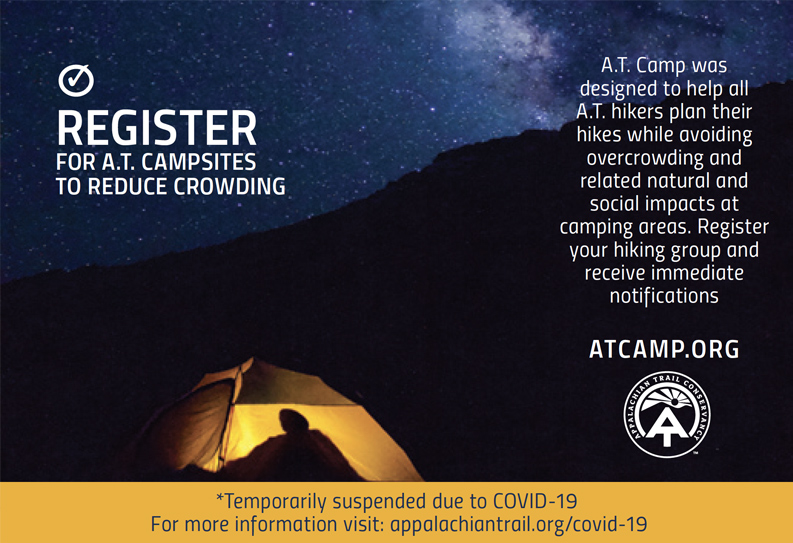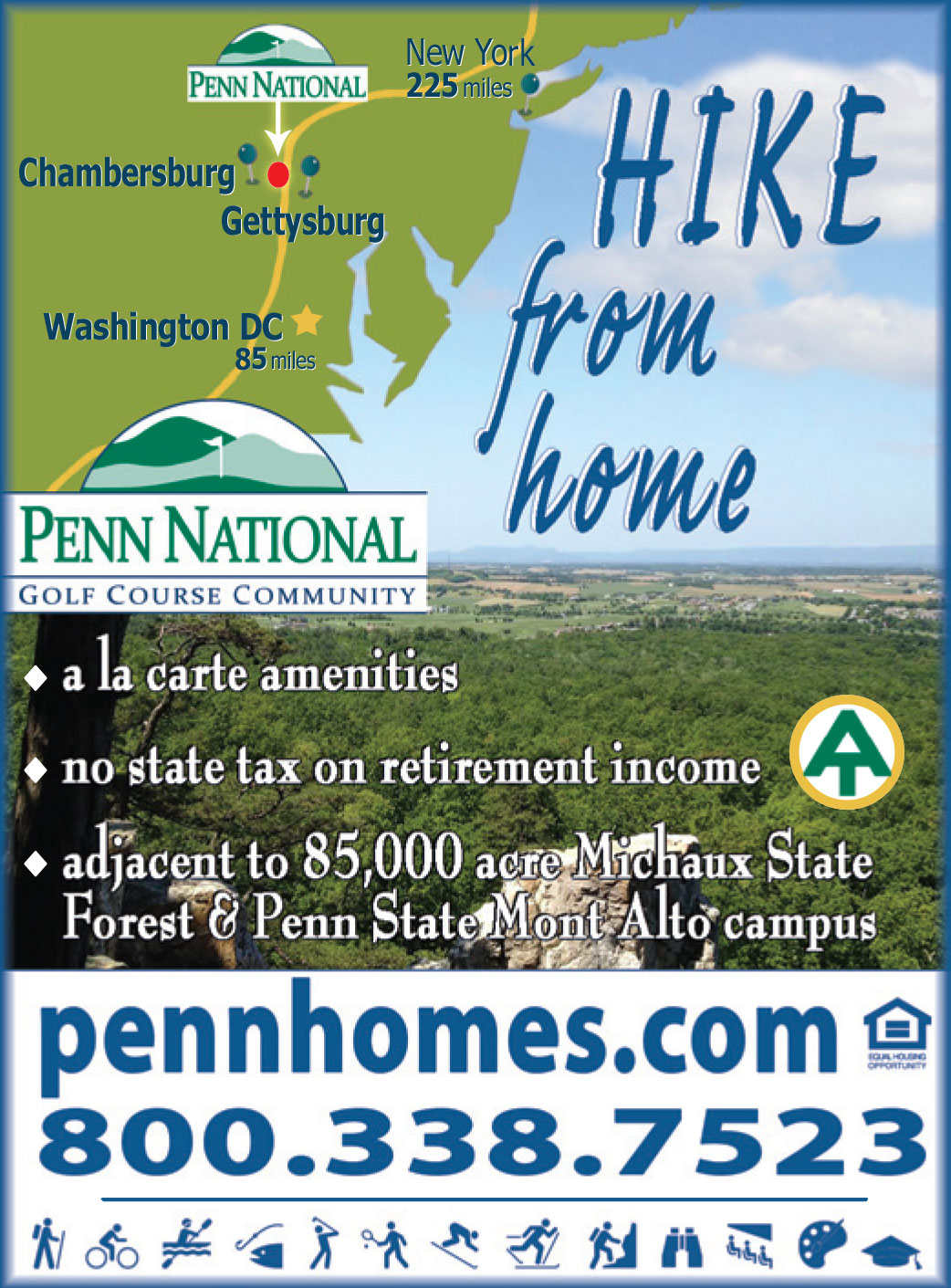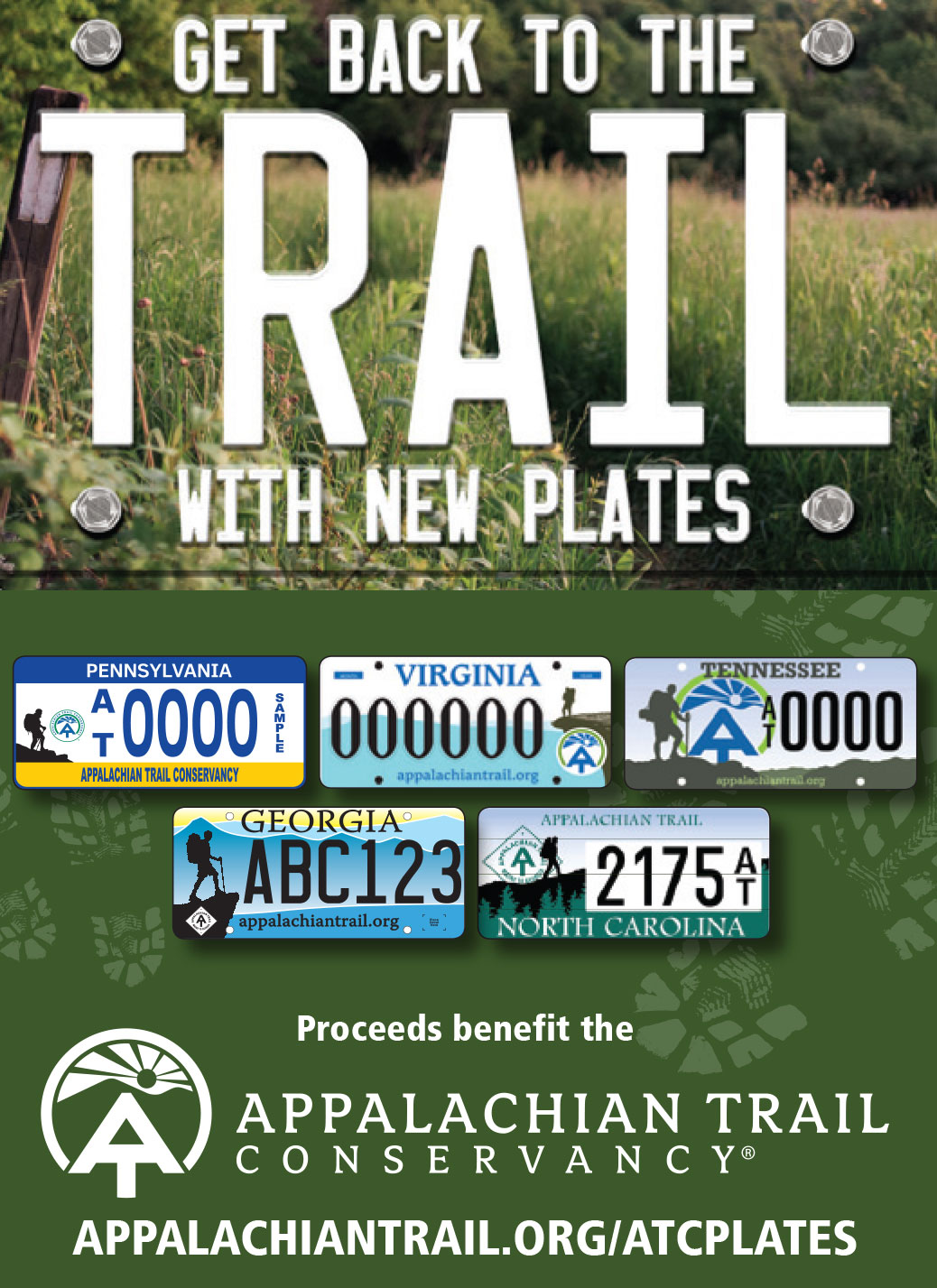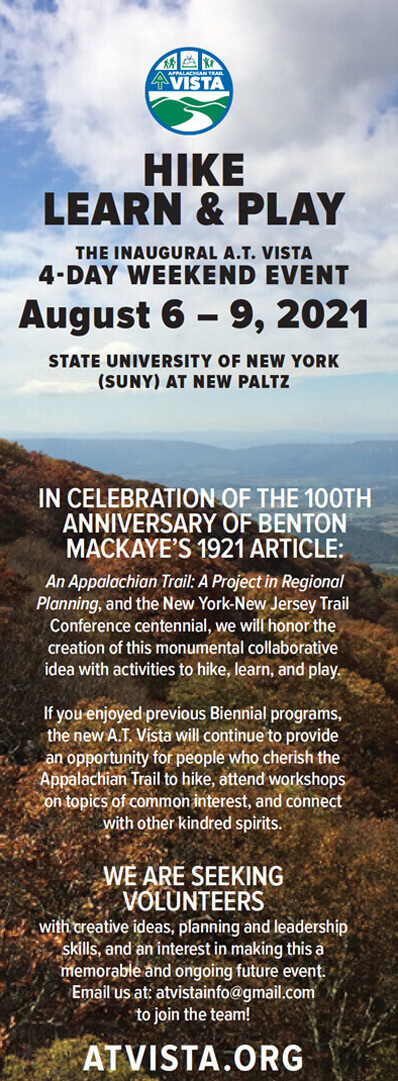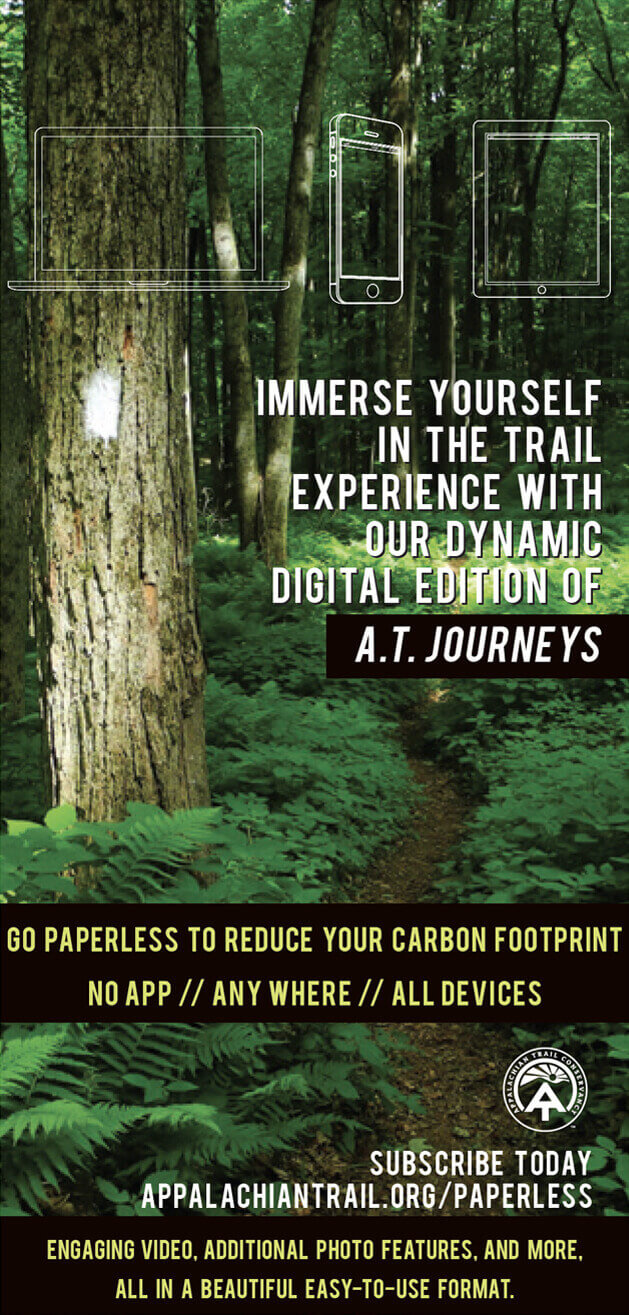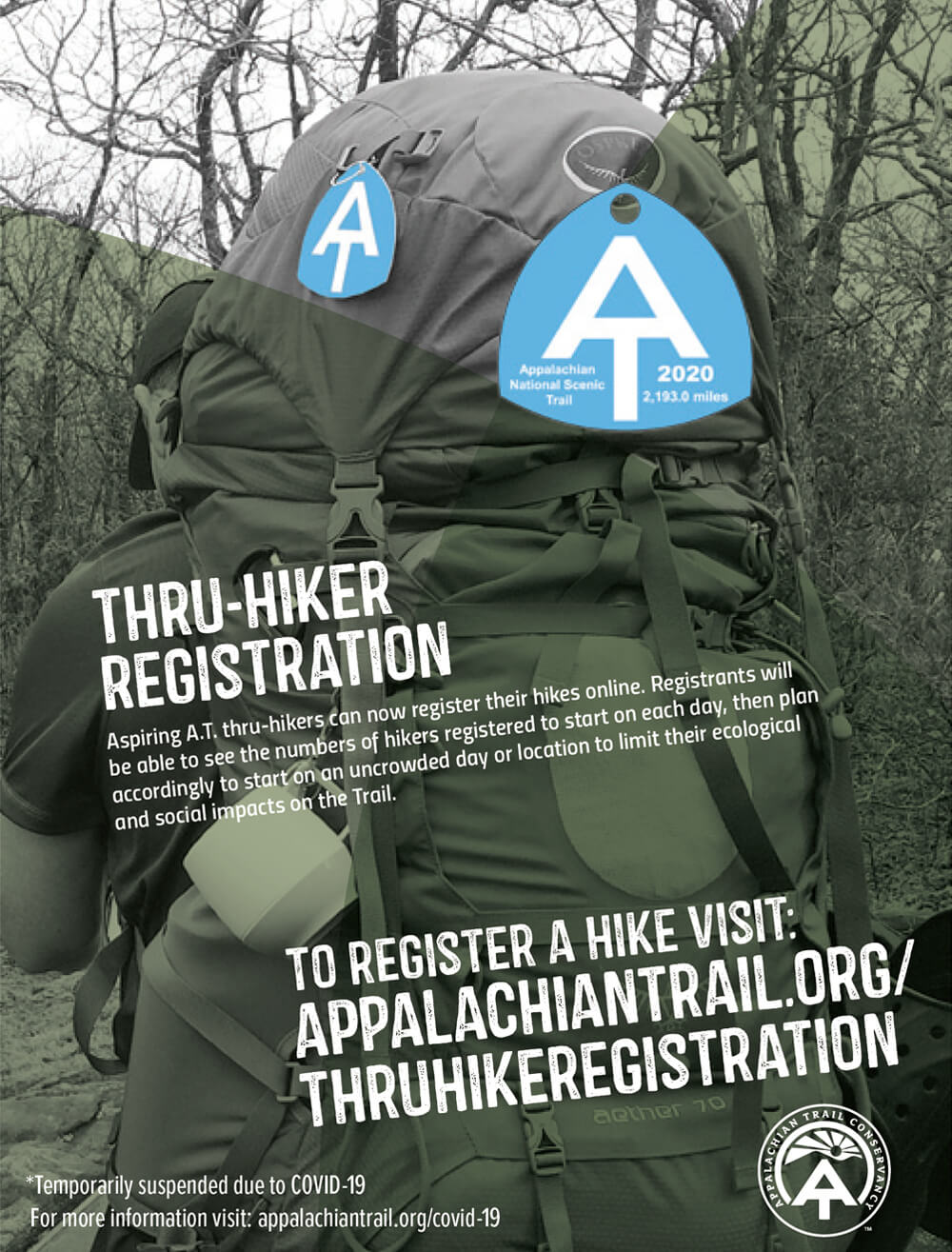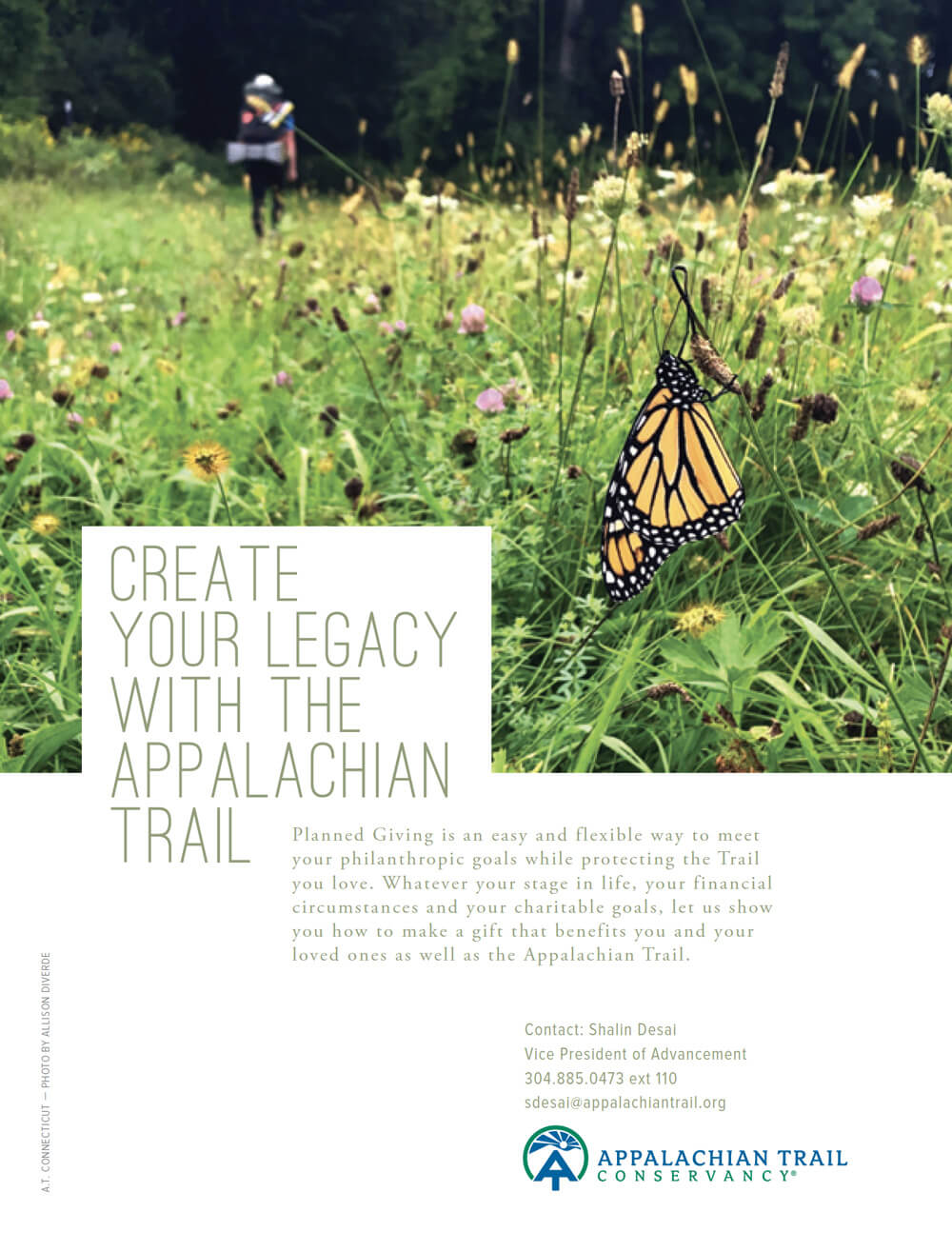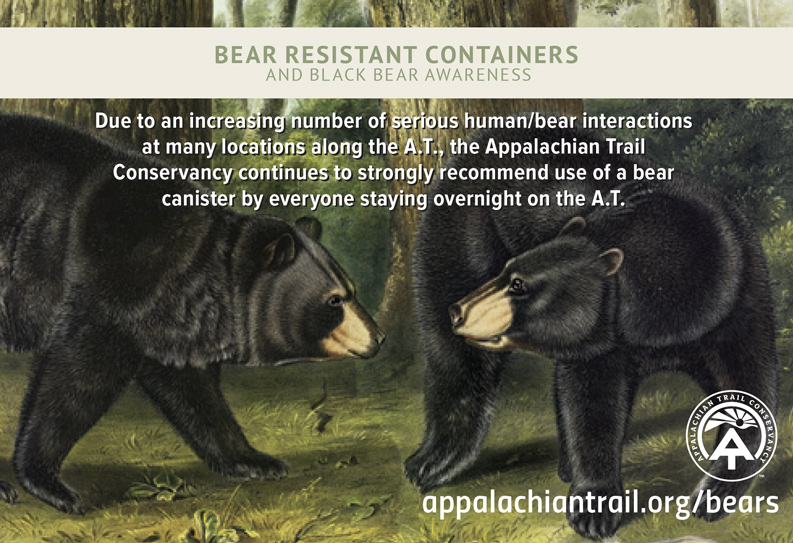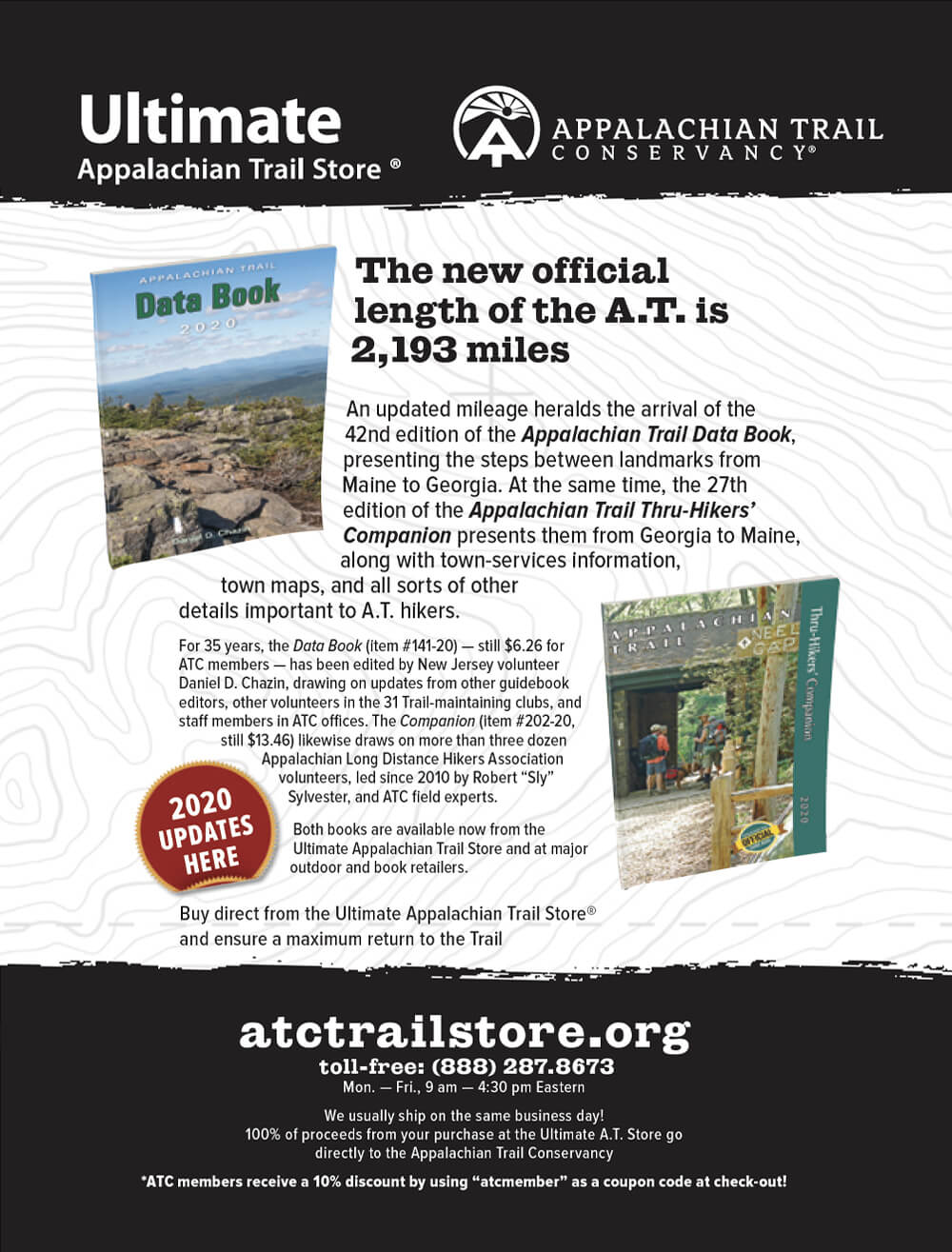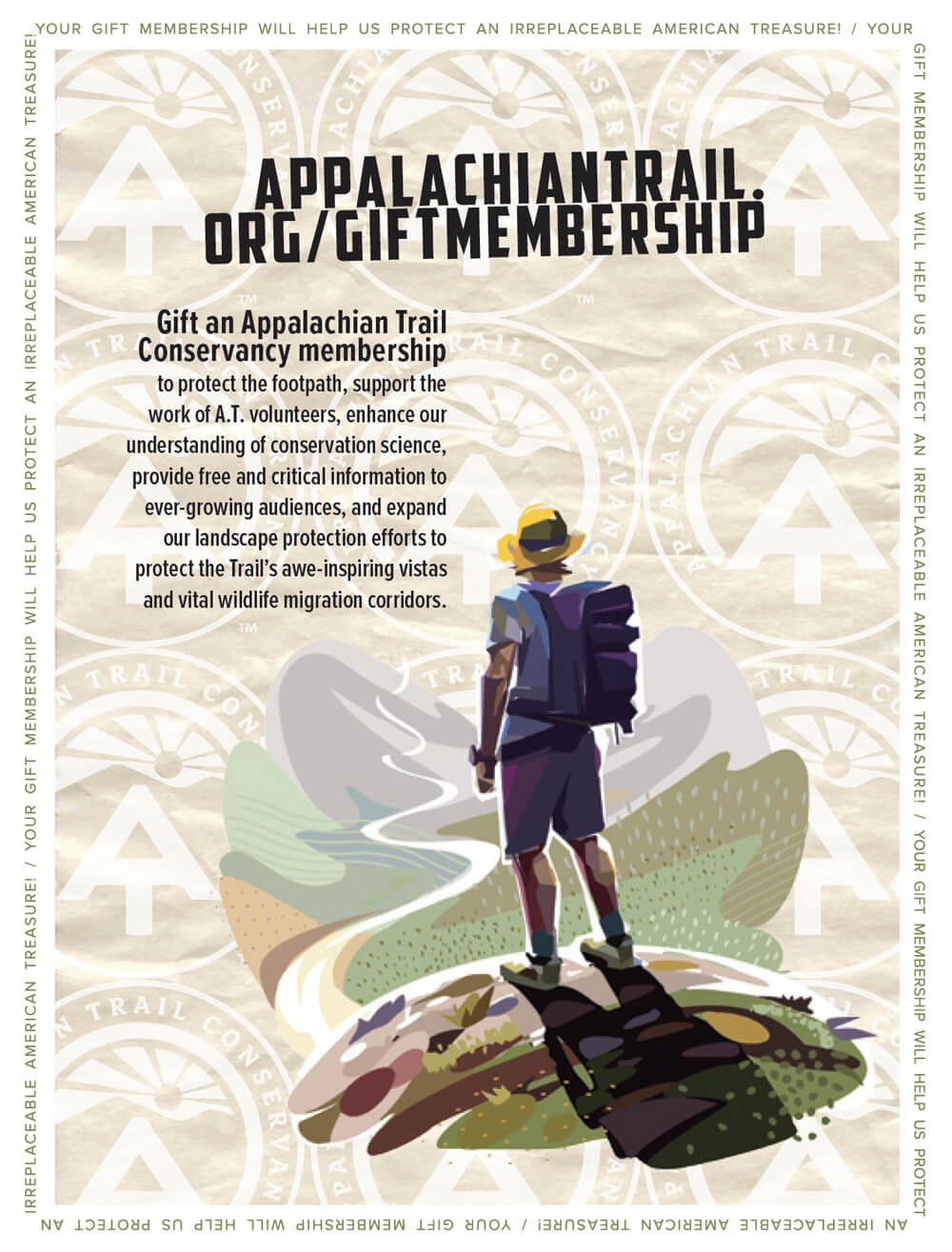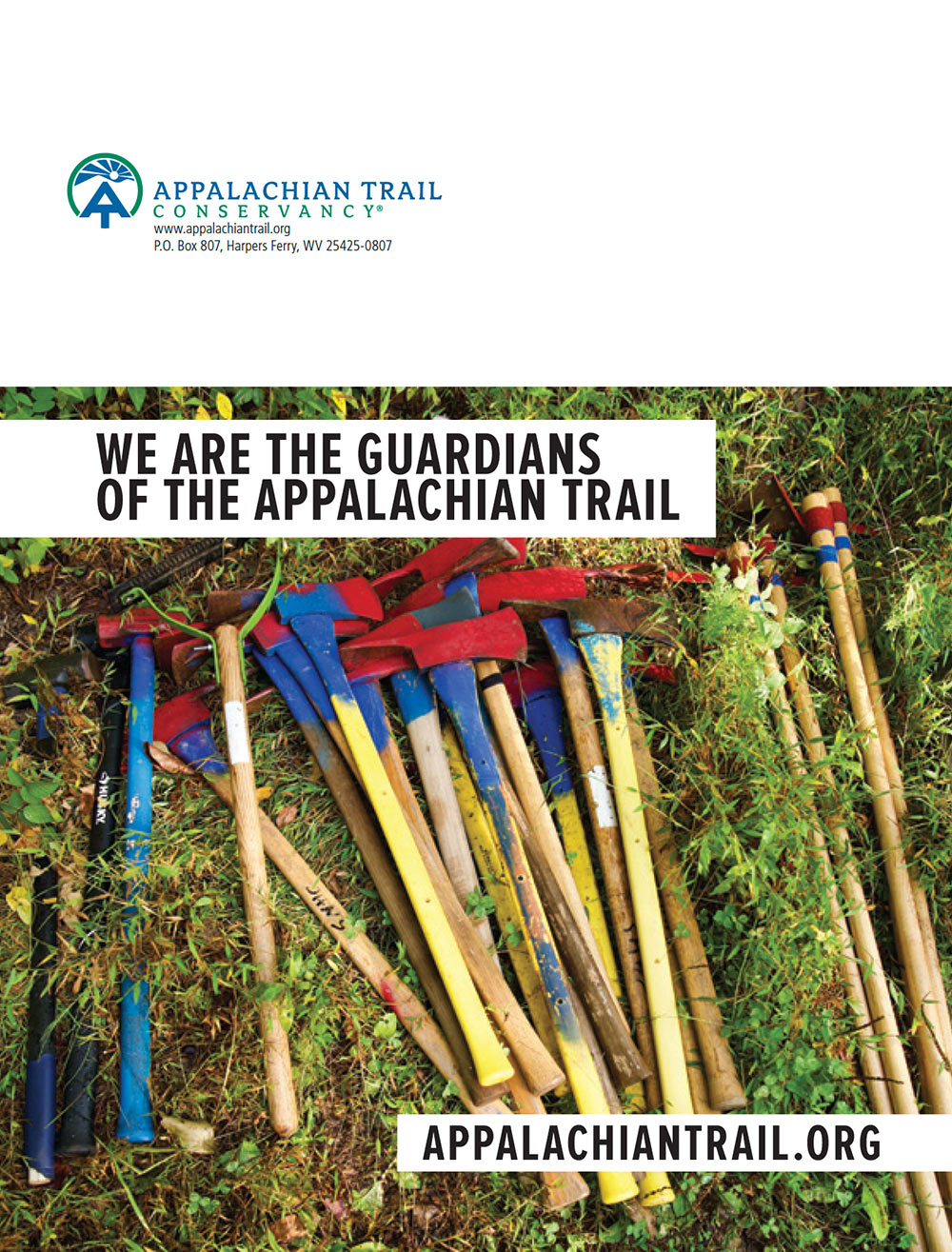ON THE COVER
Cover illustration by Katie Eberts
Above: Abundant native wildflowers and critical golden-winged warbler habitat grace Hump Mountain in North Carolina with views of Grandfather Mountain in the background – Photo by Matt Drury
ON THE COVER
Cover illustration by Katie Eberts
Above: Abundant native wildflowers and critical golden-winged warbler habitat grace Hump Mountain in North Carolina with views of Grandfather Mountain in the background – Photo by Matt Drury

Sandra Marra / President & CEO
Nicole Prorock / Chief Financial Officer
Shalin Desai / Vice President of Advancement
Laura Belleville / Vice President of Conservation & Trail Programs
Cherie A. Nikosey / Vice President of Administration
Brian B. King / Publisher & Archivist
Wendy K. Probst / Editor in Chief
Traci Anfuso-Young / Art Director / Designer
Jordan Bowman / Director of Communications
Laurie Potteiger / Information Services Manager
Brittany Jennings / Proofreader
The Appalachian Trail Conservancy’s mission is to preserve and manage the Appalachian Trail — ensuring that its vast natural beauty and priceless cultural heritage can be shared and enjoyed today, tomorrow, and for centuries to come.
Colin Beasley / Chair
Robert Hutchinson / Vice Chair
Edward R. Guyot / Secretary
Jim LaTorre / Treasurer
Grant Davies
Norman P. Findley
Thomas L. Gregg
Daniel A. Howe
Ann Heilman Murphy
Colleen Peterson
Nathan G. Rogers
Rubén Rosales
Ambreen Tariq
Hon. Stephanie Martz
Diana Christopulos
Jim Fetig
Lisa Koteen Gerchick
Mark Kent
R. Michael Leonard
Robert Rich
Hon. C. Stewart Verdery, Jr.
For membership questions or to become a member, call: (304) 885-0460
![]()
[email protected]
A.T. Journeys is published four times per year. Advertising revenues directly support the publication and production of the magazine, and help meet Appalachian Trail Conservancy objectives. For more information and advertising rates, visit: appalachiantrail.org/atjadvertising
The Appalachian Trail Conservancy’s mission is to preserve and manage the Appalachian Trail — ensuring that its vast natural beauty and priceless cultural heritage can be shared and enjoyed today, tomorrow, and for centuries to come.
Colin Beasley / Chair
Robert Hutchinson / Vice Chair
Edward R. Guyot / Secretary
Jim LaTorre / Treasurer
Grant Davies
Norman P. Findley
Thomas L. Gregg
Daniel A. Howe
Ann Heilman Murphy
Colleen Peterson
Nathan G. Rogers
Rubén Rosales
Ambreen Tariq
Hon. Stephanie Martz
Diana Christopulos
Jim Fetig
Lisa Koteen Gerchick
Mark Kent
R. Michael Leonard
Robert Rich
Hon. C. Stewart Verdery, Jr.
A.T. Journeys is published on Somerset matte paper manufactured by Sappi North America mills and distributors that follow responsible forestry practices. It is printed with Soy Seal certified ink in the U.S.A. by Sheridan NH in Hanover, New Hampshire.
A.T. Journeys ( ISSN 1556-2751) is published quarterly for $15 a year by the Appalachian Trail Conservancy, 799 Washington Street, Harpers Ferry, WV 25425, (304) 535-6331. Bulk-rate postage paid at Harpers Ferry, West Virginia, and other offices. Postmaster: Send change-of-address Form 3575 to A.T. Journeys, P.O. Box 807, Harpers Ferry, WV 25425.

-Jordan Bowman

THERE IS AN ART TO ADVOCACY. AND ADVOCACY IS OFTEN expressed through art. Writers, photographers, artists, and scientists all use their work to express what matters most to them. In my case, I advocate for the A.T. and its surrounding land and wildlife through my work on this magazine. In doing so, I collaborate with a passionate and devoted group of colleagues and Trail enthusiasts.
Recently, one such colleague sent me a 1929 Benton MacKaye letter from our archives. In it, MacKaye writes: “Our job is not really to ‘create’ an environment: It is already created — by nature. The job is to bring it out: do with each wilderness area what the chemical does for the exposed Kodak film — bring out its latent realities. That is what the artist does who paints a beautiful landscape: He brings out its beauty. That is what the dramatist does in developing a folk play — he brings out the inherent rhythm of the ceremony. Just so, we may say, the man of science brings out the mystery of nature and her hidden story through his powers of visualizing evidence: In this way, a terrestrial drama is unfolded to us by the geologist; in this way is revealed the elusive drama of the migratory birds. Each one, indeed, of these activities is the development of a portion of environment: It takes them all — artist, dramatist, man of science — to develop the complete reality.”
Even in times when we cannot get out to enjoy the Trail, we can continue to advocate for its preservation and in doing so, find solace in knowing that those miles of forests, mountains, and fields will still be there waiting for us like — to quote another artist, Thoreau — “an infinite expectation of the dawn.”

Jordan Bowman
Jordan Bowman spent his childhood exploring the north Georgia mountains and the southern end of the Appalachian Trail before tackling his long-awaited thru-hike in 2014. He now serves as the ATC’s director of communications, helping spread the word about work being done to maintain, protect, and celebrate the A.T. “Waking up every day knowing I get to hear and share some of the amazing stories about the Trail and its community of volunteers, conservationists, and hikers really is a gift,” he says. “My ultimate goal is to convince every A.T. hiker to become an advocate for the Trail, helping ensure that it is protected so the next generation of hikers can fall in love with America’s great outdoors.”

Katie Eberts graduated from the University of Michigan and is currently a freelance artist/illustrator based in the upper peninsula of Michigan. Some of her clients include Bon Appetit and Delicious Living. She has been working with A.T. Journeys for seven years, and has contributed many feature illustrations as well as the artwork for three covers — including this issue’s. “I loved working on this project because it’s heartwarming to create an illustration that portrays people from all different backgrounds and walks of life coming together with the same thing in common: a love for the Trail.”

Jack Igelman reports on the environment, conservation, and public lands for Carolina Public Press based in Asheville, North Carolina and has been a contributor to A.T. Journeys since 2011. As a former North Carolina Outward Bound School instructor, he has a deep appreciation for how trails can transform lives and why we should protect them. “It’s a great privilege to be able to write about the Trail,” he says. “I always learn something new and appreciated the opportunity to help readers better grasp the history of the Trail and its rightful status as an American treasure for all.”
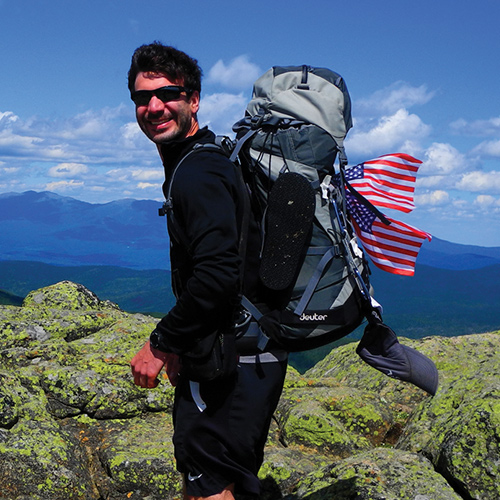
Raymond Salani III lives in Tinton Falls, New Jersey. When it comes to photography, he considers himself a “landscape artist.” While most of his attention is spent on the A.T., he also loves the western U.S., where a photo he captured in Grand Teton National Park is now slated for National Geographic’s Great Mountains 2021 Calendar. His work has been featured in numerous issues of A.T. Journeys since 2017 and he is also a contributing artist to the Yosemite Conservancy. When on the A.T., his pack is often extra heavy with camera gear earning him the Trail name “Flash.” “Planning a hike on the Trail is sometimes a battle between covering more ground versus focusing on a specific area in more detail,” he says. “Contributing work to this issue in particular allows me to share the Trail and hopefully inspire others to protect it.”
President’s Letter
WHEN LIVING AT THE BLACKBURN TRAIL CENTER as resident caretaker (along with my husband Chris Brunton), I often treated hikers to a home cooked meal. Blackburn is not an official hostel and we do not charge for the stay or refreshments, but I always opened dinner with a short talk — telling folks that listening to me was the cost of the meal. I had a captive audience and did not want to miss the opportunity to share the personal story of my lifetime commitment to the Appalachian Trail. I explained how the Trail was built, managed, and maintained by volunteers. I explained the need for responsible hiker behavior and the importance of Leave No Trace ethics. And I asked everyone there, in gratitude for the meal they were about to enjoy, that they pay it back when they got home — by joining the Appalachian Trail Conservancy (ATC) and a local Trail club, and by contributing their time and dollars to support Trail maintenance on whatever section of Trail they may find in their backyard.
In this issue, we talk about the importance of advocating for the Trail. The verb advocate is defined as “publicly recommend or support.” Having spent most of my adult life working on, and for, the Appalachian Trail, I define advocacy as a much broader and richer concept.
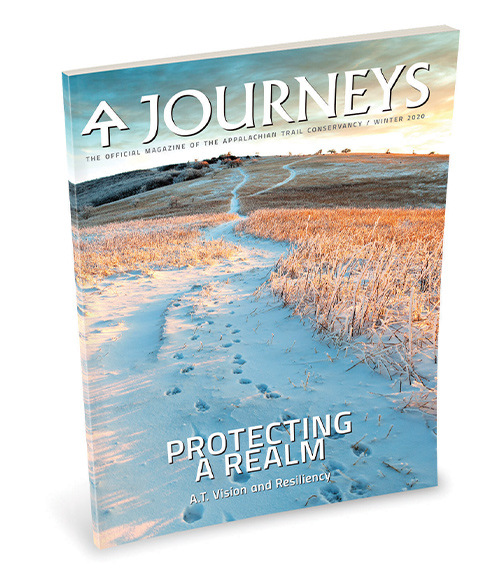
THE WINTER 2020 ISSUE OF A.T. Journeys is the best one I’ve seen. I like the way the articles (a) consider the whole corridor and (b) refer positively to other cooperating organizations (and not take all the credit for ATC). Nice work.
Roanoke, Virginia
JUST OPENED THE WINTER 2020 online version of A.T. Journeys and it looks great! This should be an enormous help in spreading the word about ATC and its priorities. I am teaching a class this semester on U.S. Environmental History and Public Policy and we are using Tangled Roots: The Appalachian Trail and American Environmental Politics by Sarah Mittlefehldt as major reading — with study of public/private partnerships for land acquisition as a major theme. It will be so great to be able to give the students access to “A Panoramic Purpose” — the article that explains a broader vision for landscape protection along the Trail — and hopefully get more of them involved in this kind of work. Well done.
Salem, Virginia

Illustration by Katie Eberts
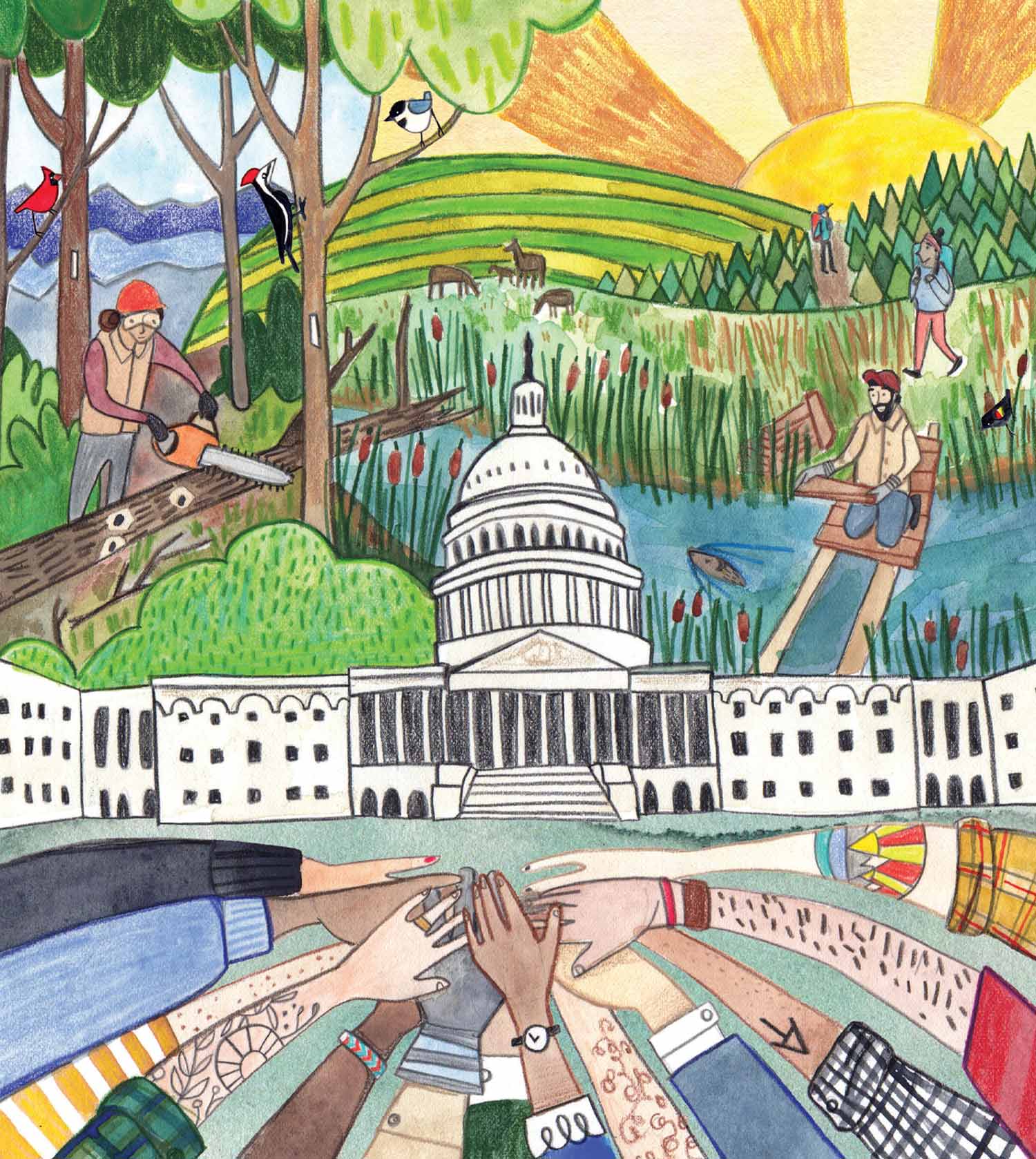

Illustration by Katie Eberts




The Next Gen is a council made up of volunteers from 18-to 30-years-old, who advise the ATC on matters of diversity, equity, and inclusion. A major focus area for the council is advocacy for the Trail. This past February, three members of Next Gen traveled to D.C. for this year’s Hike the Hill. For some, this was their first time participating in advocacy. That time was spent accompanying ATC staff into meetings with members of Congress who represent districts along the length of the Trail. Their role was to explain why the Trail matters to them personally, and to explain issues that are important to the A.T. like full and permanent funding for the Land and Water Conservation Fund, funding the deferred maintenance backlog on our public lands, and making transportation to green spaces and public lands more accessible for critically underserved communities.
Congressional appointments were set up with Republican and Democratic offices alike, and both sides came together to support a cause that benefits everyone in the U.S. Outdoor spaces like the Appalachian Trail belong to everyone equally and the voice of the next generation is essential in the need to protect and preserve them.
![]() trailhead
trailhead
Hike the Hill is important because it brings the Trail to Washington. Although the ATC has a federal policy staffer in D.C. full-time, hearing directly from the regional staff and committed volunteers is very important to make sure that Congressional and Executive branch staff understand the incredible work ATC’s staff, Trail clubs, and our local partners do all year round to protect the Trail. Keep an eye out for more information on ATC’s federal advocacy and how you can share your experience to educate federal decision-makers.
![]() trailhead
trailhead
![]() trailhead
trailhead
Hike the Hill is important because it brings the Trail to Washington. Although the ATC has a federal policy staffer in D.C. full-time, hearing directly from the regional staff and committed volunteers is very important to make sure that Congressional and Executive branch staff understand the incredible work ATC’s staff, Trail clubs, and our local partners do all year round to protect the Trail. Keep an eye out for more information on ATC’s federal advocacy and how you can share your experience to educate federal decision-makers.
to Covid-19
to Covid-19
appalachiantrail.org/covid-19
![]() trailhead
trailhead
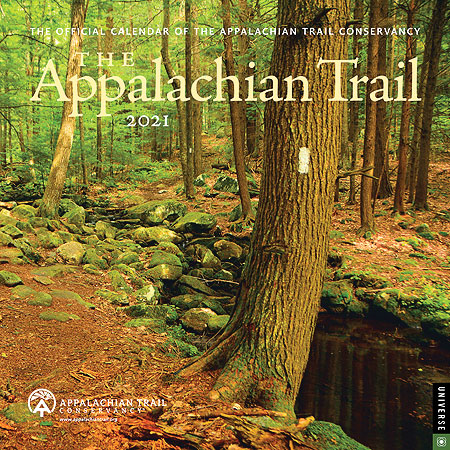
This sneak peek of the 2021 official Appalachian Trail Conservancy (ATC) calendar gives you an idea of what we are seeking for the 2022 calendar — by mid-July 2020. The ATC calendar, co-published since 2012 with Rizzoli International, features a mix of photographers and subjects and has always had a dual purpose: To show the visual allure of the Trail landscape to hikers and nonhikers alike — and to brag a bit about the volunteers who maintain it. You could be a part of that legacy.
What we need: High-resolution digital images (TIFFs only) of scenes on the Trail. Send images (limit of 36) on a DVD to: Publisher, Appalachian Trail Conservancy, P.O. Box 807 (or 799 Washington St.), Harpers Ferry, WV 25425. Digital images should be no smaller than 13 inches long and wide, at 300 dpi. Please include: location and month taken for each image — with the photographer’s last name and image ID in the file name. Visible blazes are a major bonus; so is sunshine. Candid shots of hikers near blazes are a double bonus; posed shots cannot be considered. Each selected image is worth $200.
![]() trailhead
trailhead
Nominations are now open for positions on the Appalachian Trail Conservancy’s (ATC) Board of Directors. Elections and certifications for open director positions will take place during the 2020 annual membership meeting, the time for which will be announced in the Summer issue of A.T. Journeys.
Under the ATC’s bylaws, membership meetings are held each year, and the elected leadership serves staggered three-year terms, with one third of the 15 board positions becoming open each year. A slate of nominees will be selected by our nominating committee, which is within our governance committee. This slate will then be approved by the full board, and finally voted on by ATC membership at the annual meeting.
If you, or someone you know, are interested in serving on the ATC Board, we welcome your nomination. We look at many criteria as we review all nominations for the board. Most importantly, the ATC is a complex, national non-profit, and it is key that you or your nominee can show fiduciary oversight capabilities and experience of a similar scope in the non-profit or for-profit world. We believe a strong candidate must have a passion for the Appalachian Trail and be able to articulate that passion for the A.T. and the ATC’s mission. We also are committed to having a wide diversity of experience and thoughts on the board and look to have our leadership accurately reflect the society in which the Trail exists.
The volunteer board requires a commitment of your time, including four meetings per year and additional committee assignments. Board members must be ATC members in good standing.
All nominations, including self-nominations, should include both the nominee’s and the nominator’s name, address, telephone number, and e-mail address, with a description of the person’s relevant experience, skills, and attributes with emphasis on the criteria above (oversight experience, passion for the A.T., diversity of thought, and time considerations). Please submit a C.V. or resume if available. We take every nomination seriously, and we appreciate the time you put into the nomination and the nomination process. The committee’s slate will be announced in an ATC publication/web site between June 14 and July 23, 2020.
![]() trailhead
trailhead
There are two main origins of open areas along the A.T.: cultural and ecological. Most cultural open areas are relicts of an agricultural past, such as the open areas in the bucolic landscape surrounding Tyringham, Massachusetts. This part of the Berkshires was first settled in 1735 as an agricultural community and contains some of the largest open meadows within the A.T. corridor. These open areas are managed as priority habitat for grassland bird species like the bobolink and for pollinators, but also for grazing livestock to maintain the historical context of the area.
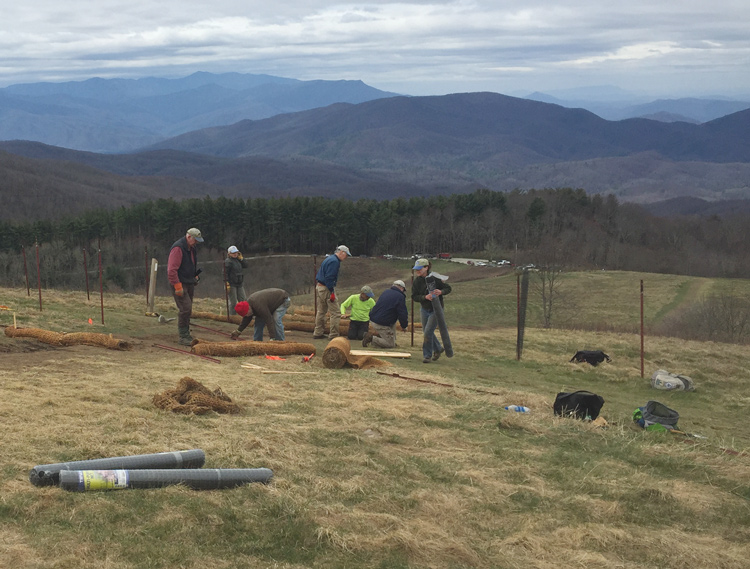
![]() trailhead
trailhead
There are two main origins of open areas along the A.T.: cultural and ecological. Most cultural open areas are relicts of an agricultural past, such as the open areas in the bucolic landscape surrounding Tyringham, Massachusetts. This part of the Berkshires was first settled in 1735 as an agricultural community and contains some of the largest open meadows within the A.T. corridor. These open areas are managed as priority habitat for grassland bird species like the bobolink and for pollinators, but also for grazing livestock to maintain the historical context of the area.

The open areas programming along the A.T. is continuing to evolve and grow through ongoing scientific research, expanding partnerships, robust support from the Appalachian National Scenic Trail office, and the work of Trail clubs and volunteers. The ATC will continue to manage these open areas to reclaim and preserve the iconic views along the A.T., while considering their ecological role in the greater landscape.




National Park, Virginia
Photo by Raymond Salani III

 fter being ushered into the local office of an Atlanta-based member of Congress, the Appalachian Trail Conservancy’s (ATC) southern regional director Morgan Sommerville and a Georgia Appalachian Trail Club volunteer were seated at his desk. On display was a meter. Its swiftly spinning digits flickered in a blur. “That,” boasted the fiscally conservative congressman while pointing at the gadget, “is the national debt.”
fter being ushered into the local office of an Atlanta-based member of Congress, the Appalachian Trail Conservancy’s (ATC) southern regional director Morgan Sommerville and a Georgia Appalachian Trail Club volunteer were seated at his desk. On display was a meter. Its swiftly spinning digits flickered in a blur. “That,” boasted the fiscally conservative congressman while pointing at the gadget, “is the national debt.”
Not exactly words you want to hear when your pitch is to steer funds from the U.S. Treasury to protect the Appalachian Trail. For the next quarter of an hour, Sommerville and the volunteer politely listened to a lecture on government overreach. When his commentary concluded, the congressman looked at them and proclaimed that, despite the escalating value on his meter, he would pledge his support because, of course, everyone loves the Trail.


 Illustration by Art Lien
Illustration by Art Lien Illustration by Art Lien
Illustration by Art LienThe A.T. is a unit of the National Park Service, meaning that it is as much a national park as Glacier or Yosemite. It is, however, a “linear park,” not a “square park,” because it was designed to pass through other federal, state, and private lands. The beauty and intent of the National Trails System Act is that, by enabling national trails to traverse other federal units, it would enhance their recreational value without diminishing or confusing their management responsibilities or authorities. In the 52 years since the Trails Act became law, the participants in the system have successfully adhered to this idea, without encountering significant internal or external conflict.
The A.T. is a unit of the National Park Service, meaning that it is as much a national park as Glacier or Yosemite. It is, however, a “linear park,” not a “square park,” because it was designed to pass through other federal, state, and private lands. The beauty and intent of the National Trails System Act is that, by enabling national trails to traverse other federal units, it would enhance their recreational value without diminishing or confusing their management responsibilities or authorities. In the 52 years since the Trails Act became law, the participants in the system have successfully adhered to this idea, without encountering significant internal or external conflict.
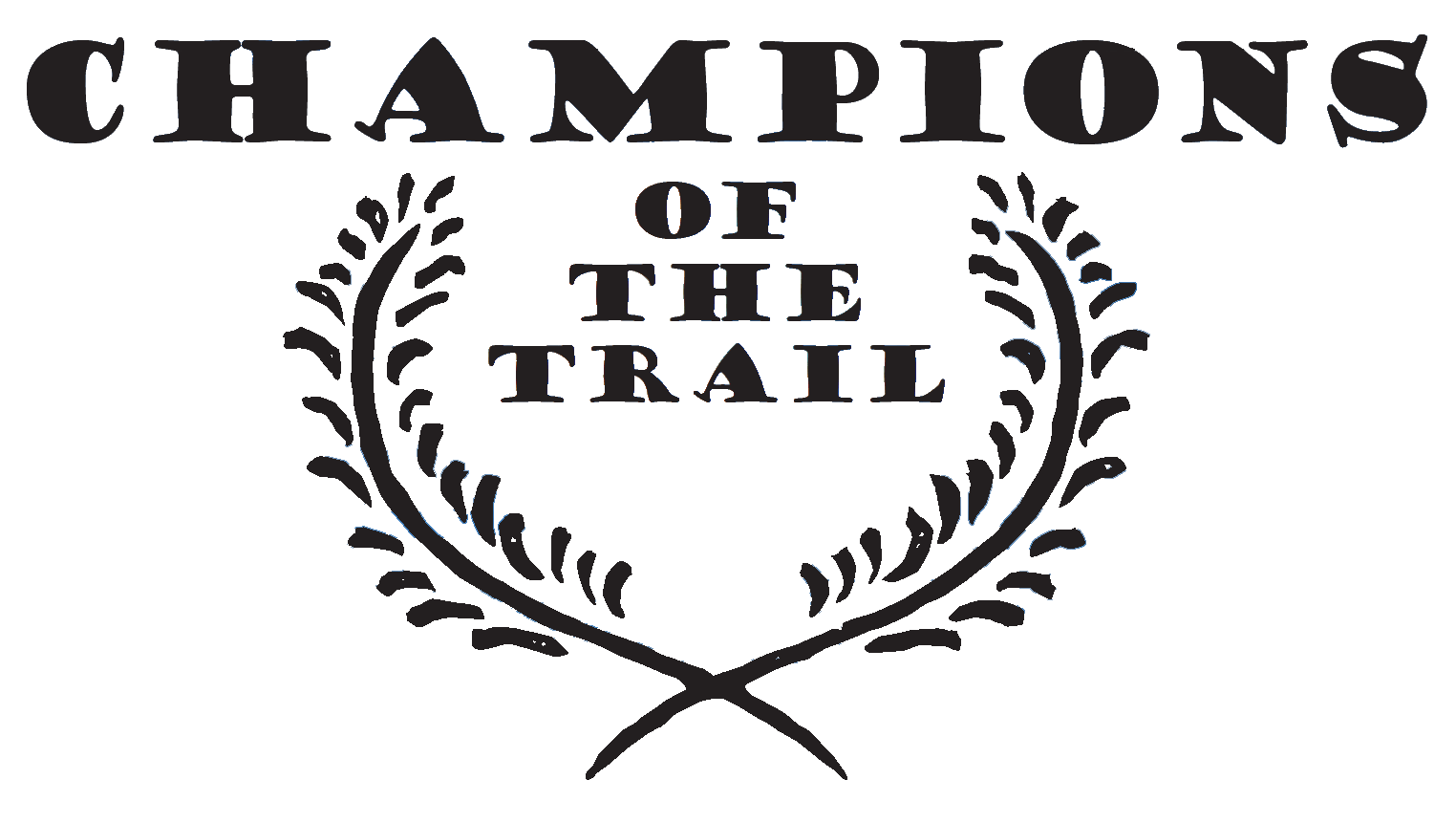
Photo by Raymond Salani III
Photo by Raymond Salani III
 By Leanna Joyner
By Leanna Joyner By Leanna Joyner
By Leanna Joyner

ur list of determined individuals includes those who reported hike completions of the entire Trail (thru-hikes or section-hikes) to the Appalachian Trail Conservancy (ATC) since last spring. Congratulations to all 1,159 determined hikers who reported their completion of the entire Appalachian Trail in 2019. For the fourth year in a row, the number of thru-hikers who reported completing a flip-flop itinerary was greater than the number of those reporting a southbound thru-hike, although northbounders are the largest category by far again. We received applications from hikers as far away as Slovakia and China. The ATC wants to thank all of those hikers who are also ATC members and encourage others to give back to the Trail they love at:




ur list of determined individuals includes those who reported hike completions of the entire Trail (thru-hikes or section-hikes) to the Appalachian Trail Conservancy (ATC) since last spring. Congratulations to all 1,159 determined hikers who reported their completion of the entire Appalachian Trail in 2019. For the fourth year in a row, the number of thru-hikers who reported completing a flip-flop itinerary was greater than the number of those reporting a southbound thru-hike, although northbounders are the largest category by far again. We received applications from hikers as far away as Slovakia and China. The ATC wants to thank all of those hikers who are also ATC members and encourage others to give back to the Trail they love at:





raymond salani iii
~Raymond “Flash” Salani III
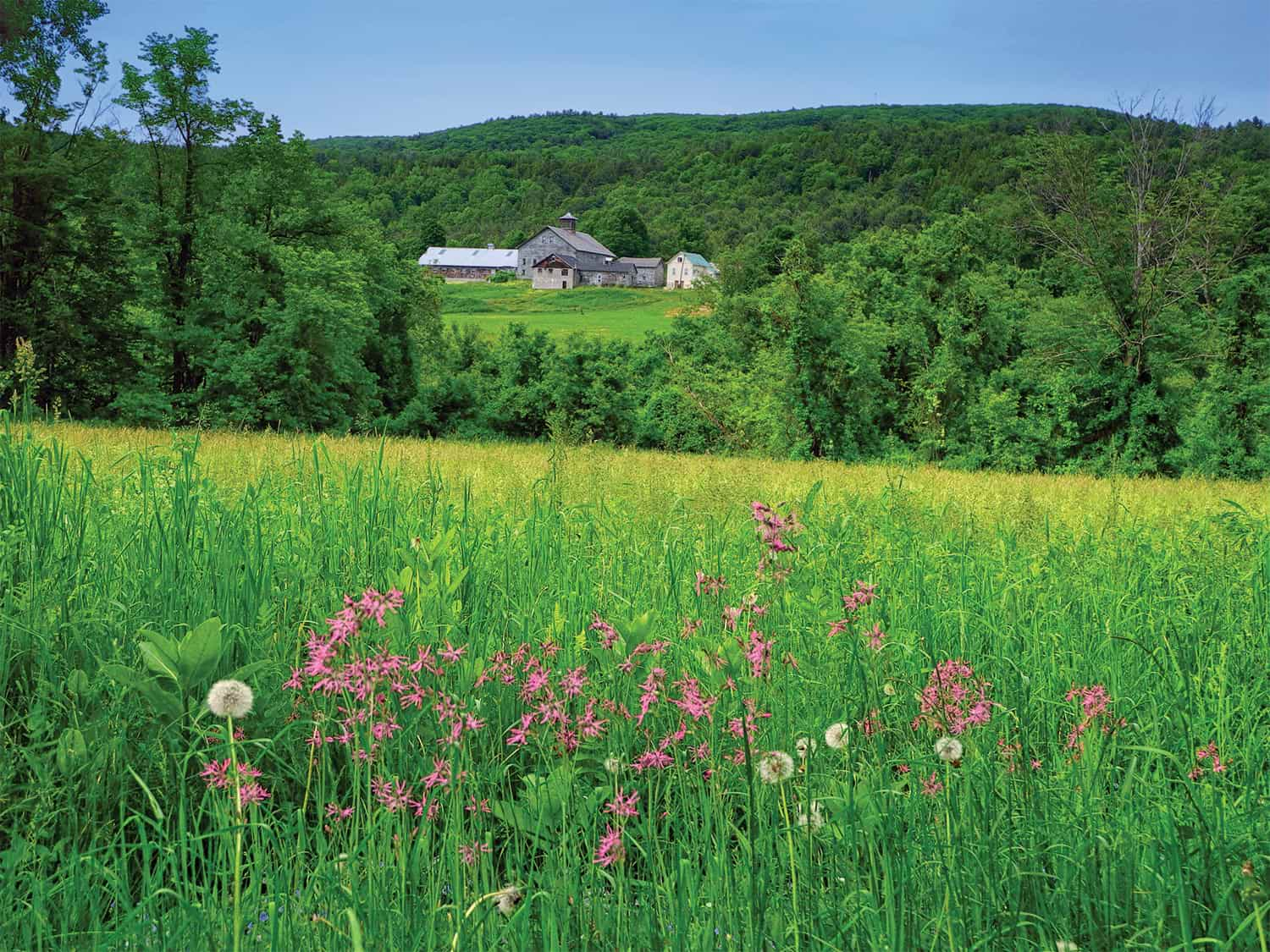
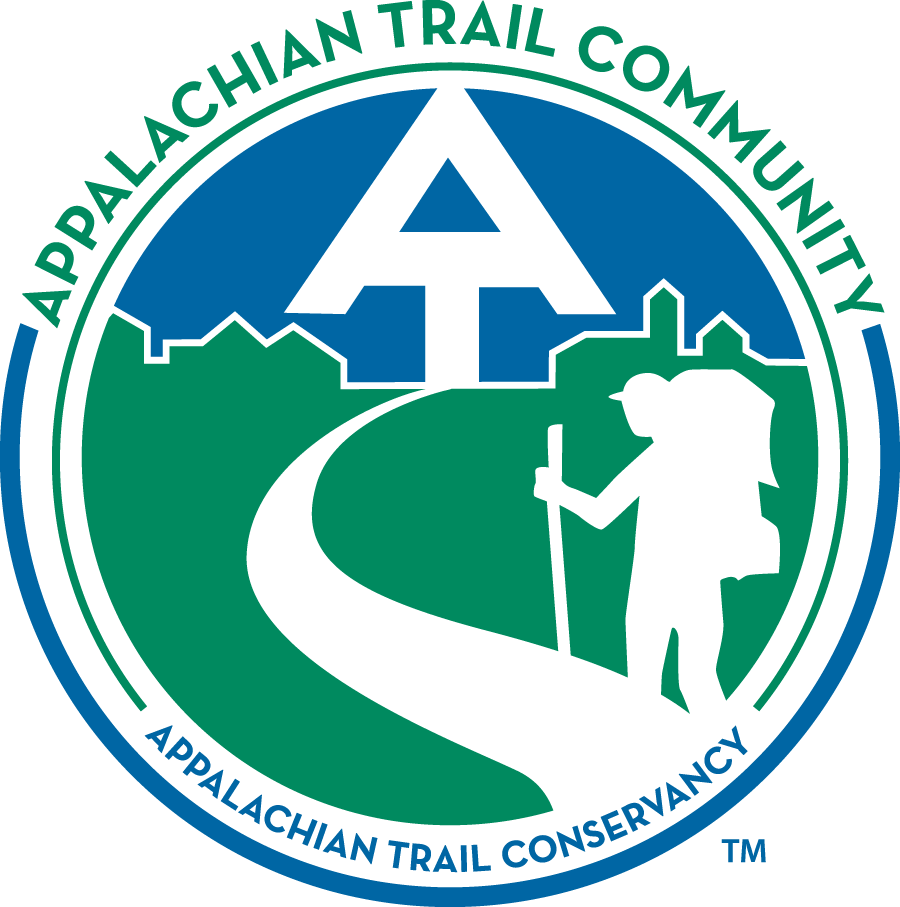
Pennsylvania
Pennsylvania
Students learn the importance of the environment and green spaces surrounding their community.
Text and photos by
Tawnya Finney
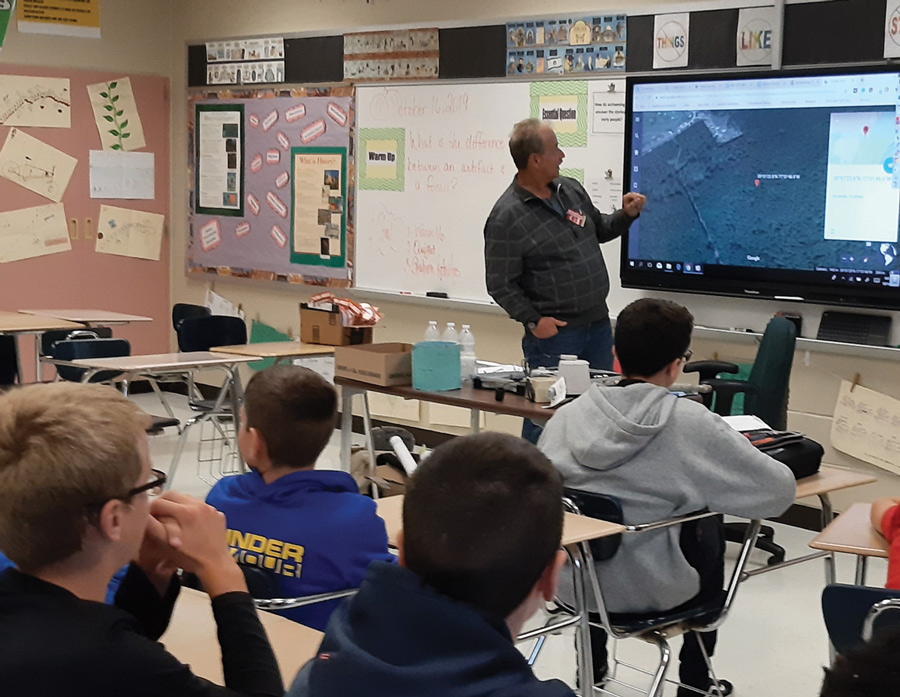
Students learn the importance of the environment and green spaces surrounding their community.
Text and photos by
Tawnya Finney

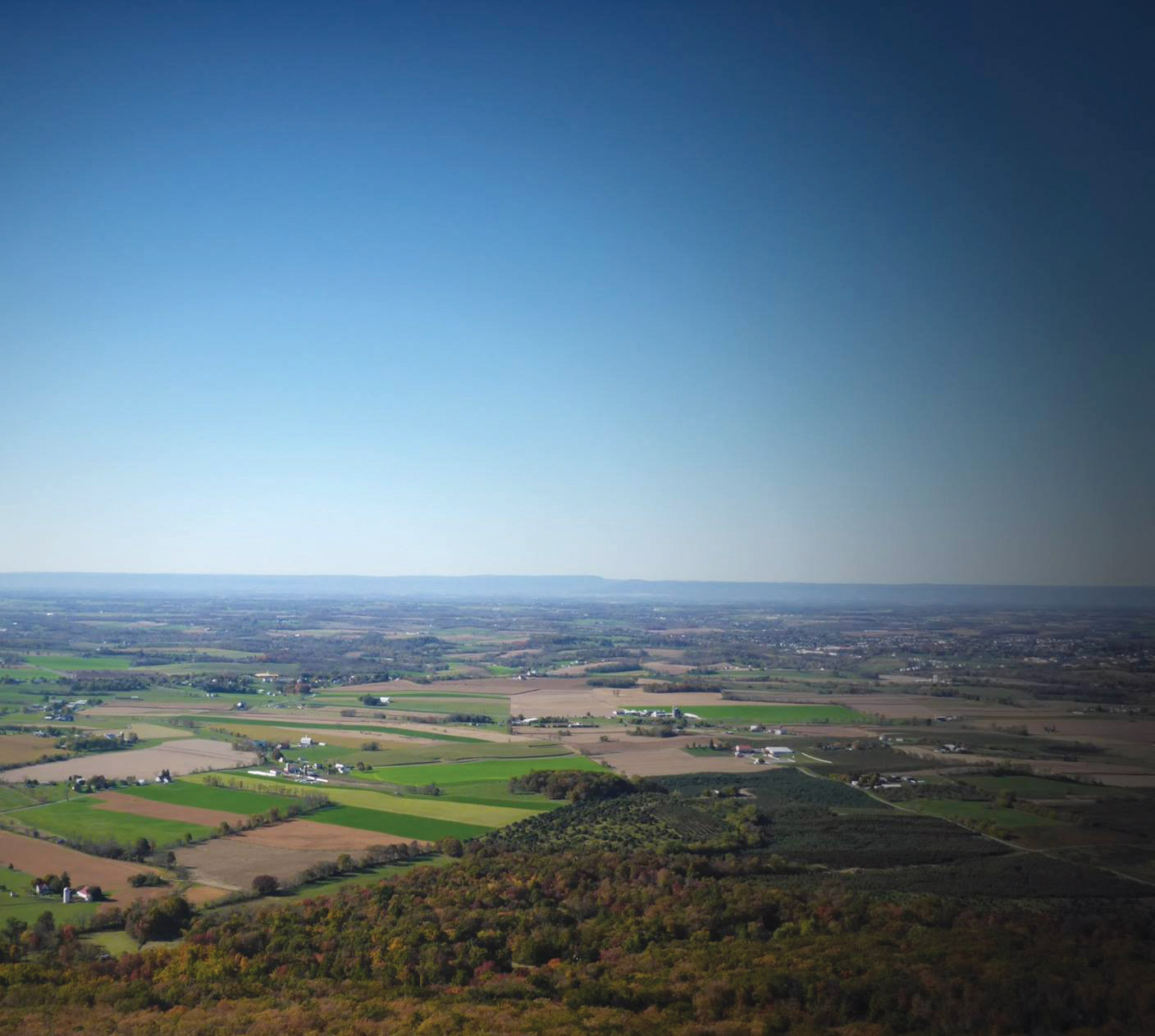
Photos by Derrick Z. Jackson
“Your trail name is very pretty, Northstar,” a hiker complimented me, “what does it mean?”
“The North Star — it shows us the way to go,” I said simply. Later, I lay in the dark, anxious about my journey. I was visited by a waking dream from a woman I call ‘The Ancestor.’ She was a fugitive from slavery, traveling north.
Like me, she was worried about her physical capability, injury, bears, and rattlesnakes. But the similarities end about there. I lay in a simple but sturdy shelter. She lay in a cellar. If lucky, she had a “sleeping pad” of straw. I wait for daylight to make my journey easy. She waits for nightfall to obscure captors. I mourn sending my dog companion home because she could not handle the cold. My Ancestor fears dogs that track her. I put on my wool socks in the cold and lace up my sturdy boots. Does she even have socks and shoes? I long for my family members. But I can reach them with a cell signal. She does too, but it will be months before she knows if they are dead, alive, or captured. I eat some beef jerky that I prepared. When I’m running low, I can call my family for mail drops. Surely my Ancestor prepared food for her journey too. But she does not know where her next supply of food will come from.
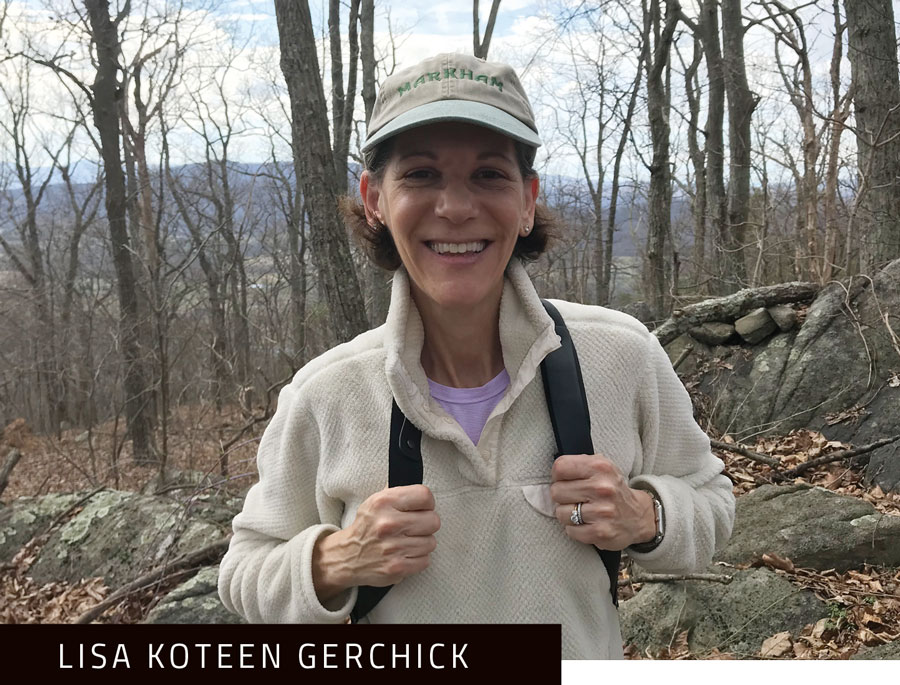
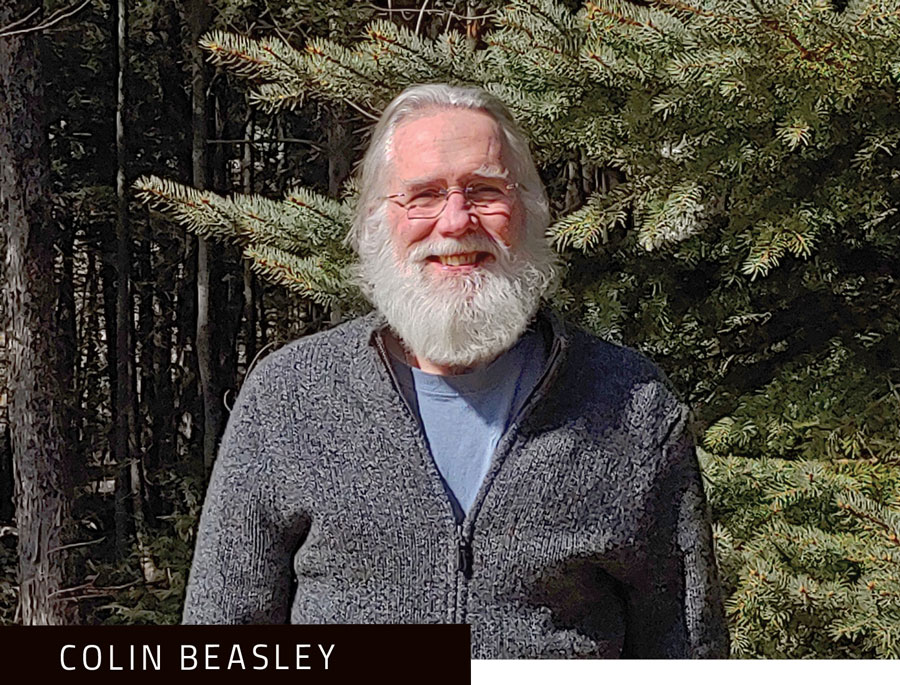
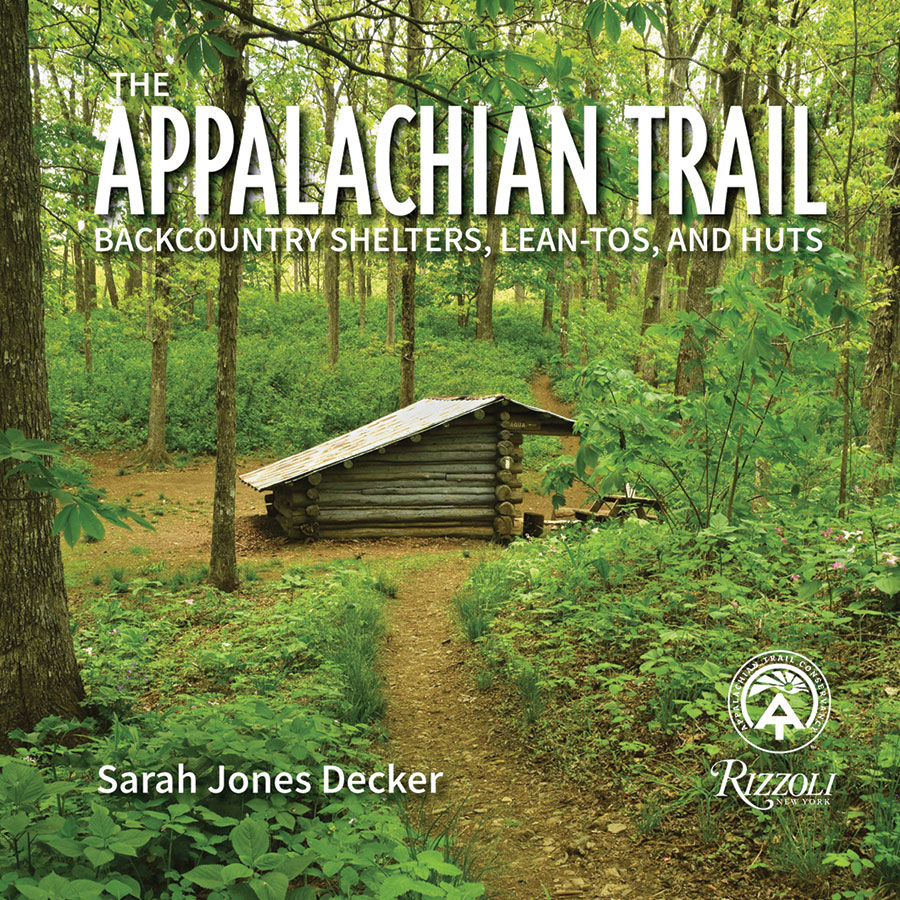
A nostalgic desire to get out and experience the Trail again, led new mother and former thru-hiker Sarah Jones Decker to begin a richly informative examination of the varied and unique structures that offer shelter to hikers on the Appalachian Trail. In The Appalachian Trail: Backcountry Shelters, Lean-Tos, and Huts Decker explores the more than 250 backcountry structures that exist along the 2,193-mile footpath.
“I thru-hiked the A.T. in 2008 right after grad school,” she says. “After my daughter was born in 2017, I decided to celebrate my ten-year ‘Trailsversary,’ by hiking sections of the A.T. more often near our home.” (Sarah and her husband own an organic farm outside of the Trail town of Hot Springs, North Carolina.) “I wanted to get back in shape and decided to set the goal of hiking every month of 2018,” she says. “Since the A.T. runs some 70 miles right through and near Madison County from Max Patch to Big Bald, it was easy to get out every week. I revisited my journals from my thru-hike and saw that I had doodled about the idea of documenting all of the shelters on the Trail. I took pictures of some shelters in 2008, but definitely not all, so I had to go back to almost every shelter again.”
Trail Giving
IN HONOR OF
Bob Almand by Greg Winchester
William Appleby by Sara Baker
Jim Arrington by Sarah Petty
Matt Bader by Erin DeLaTorre
Danny Bagwell by Nanci McMaken
John Ball by Barbara Ball
Peter Barker by Mom & Dad
Louise & Bill Bazemore by Donna Torreyson
Greg “Mr. Burns” Beckham by Jon Beckham
Laura Belleville by Rubén A. Rosales
Ben & Pam Bensen by Katherine Porter
Laura Birchler by The Willans
Benjamin Michael Blais by John Anderson
Gerald & Joanie Blaney by Elizabeth Sass
Franklin Bloomer by Marilyn Geninatti
Zack Labadie by Alvin Ohlenbusch
Jessica Lang-Wright by David Goldsmith
Ann & Steve Larrick by Mary McKinley, John Stefanovich
Mary Lou Lee by Dr. & Mrs. Cyrus Bazemore, Jr., Donna Torreyson
Michael Leever by Debbie Westheimer
Nan Leininger by Michael & Lucy Fribourg
Edward Linke by Michele Ladd
Mark Lowry by Rebecca Lowry
Derick “Mr. Fabulous” Lugo by City of Roanoke, Roanoke Outside Foundation, Roanoke Regional Partnership
Joanna Lundberg by Thomas Baldwin
Karen Lutz by Jim Haggett
Dick & Linda Mackay by Mari-Joan Lucey
Macs Adventure Travelers by Mary Zonca
Mike Maher by Mary & Paul Scagliarini
IN HONOR OF
Bob Almand by Greg Winchester
William Appleby by Sara Baker
Jim Arrington by Sarah Petty
Matt Bader by Erin DeLaTorre
Danny Bagwell by Nanci McMaken
John Ball by Barbara Ball
Peter Barker by Mom & Dad
Louise & Bill Bazemore by Donna Torreyson
Greg “Mr. Burns” Beckham by Jon Beckham
Laura Belleville by Rubén A. Rosales
Ben & Pam Bensen by Katherine Porter
Laura Birchler by The Willans
Benjamin Michael Blais by John Anderson
Gerald & Joanie Blaney by Elizabeth Sass
Franklin Bloomer by Marilyn Geninatti
Gabriela Bogdan by Stephanie Gillett
Paul Brame by Jeremy Brame
Renee & Randy Brooks by Christina McPhillips
Lucas Brown by Bradley Brown
Ruby Brown by Thea Brown
Bill & Margaret Bryant by Jennifer Bryant
Stacey “Stylez” Bucklin by Janelle Libertone
Mitch Buntemeyer by Lauren Buntemeyer
Mark Burch by Emily Burch
Juli & Philip Burgess by Gabrielle Delzer
Adam Campbell by Rebecca Fisk
Randy Carlson by Mom & Neil
Frank Condron by Angela Svoboda
Erica Coughlin by Reliable Staffing Services, LLC
Lee Alison Crawford by Anne Brown
Kiernan Deangelis by Dr. Joseph Campbell
Amanda Donovan & Zachery Tewey by Karen Duivenvoorden
Sam Duchame by Abigail Maddox
William Duncan by Graham Duncan
Michael Eldredge by Sarah Eldredge
Laura Engelmann by Trish Henrich
Ruth Ference & Frank George by Heather Hoechst
James Fielder by Stephen Casey, Priscilla Connolly
Christopher “Chris” Fisher by Rich & Dyane Miles, Ronda Pecaric, Lisa Reynolds
Gabriella Fonger by Shannon Fonger
Dennis “Mountain Man” Foster by David Champe, Pamela Pinwith, William Ulich
Lisa & John Godfrey by Renee Gruel
Andrea Greenberg by John & Madeline Wood
Tom Griffin & Family in memory: “Teese” wife by Donna Torreyson
Diane & Don Groff by Susan Merritt
April Guenzler by Wendy Galloway
Neil Hacker by Claire Hacker
James Hajduk by Jonathan Carter
Martha Harper by Dr. & Mrs. Bazemore, Jr., Donna Torreyson
Kelly Harrington by Kim Rally
Trish Harris by Sarah Parrish
Stewart “Decade” Harsant by Dave & Pam Harsant
Carl Hayden by Jean Ripple
Dr. Hal Hemme by Sara Caldwell
Rita Hennessy by Julie Judkins
Ed Higginbotham by Curt Bassett
Patrick Hilaire by Kyle Katchur
Julia Howard by Wilbur Clark
Steve Howell & Sarah McClennen by Robbin MacVittie
Doug Hubbard by Nancy Andrews
Larry & Doris Jelley by Joan Jelley Surles
Emma May & John by Dori Weigel
Carl Johnson by Bruce Johnson
Michael Johnson by Therese Dunn
Austin Kane by Rebecca Barilovits
Rick & Carolyn Kanoy by Jeanna Darby
E,R. Karalius by Mary McKinley, John Stefanovich
Darl & Joline Kolb by Susan Merritt
Alex Krispin by Tara Gordon
Zack Labadie by Alvin Ohlenbusch
Jessica Lang-Wright by David Goldsmith
Ann & Steve Larrick by Mary McKinley, John Stefanovich
Mary Lou Lee by Dr. & Mrs. Cyrus Bazemore, Jr., Donna Torreyson
Michael Leever by Debbie Westheimer
Nan Leininger by Michael & Lucy Fribourg
Edward Linke by Michele Ladd
Mark Lowry by Rebecca Lowry
Derick “Mr. Fabulous” Lugo by City of Roanoke, Roanoke Outside Foundation, Roanoke Regional Partnership
Joanna Lundberg by Thomas Baldwin
Karen Lutz by Jim Haggett
Dick & Linda Mackay by Mari-Joan Lucey
Macs Adventure Travelers by Mary Zonca
Mike Maher by Mary & Paul Scagliarini
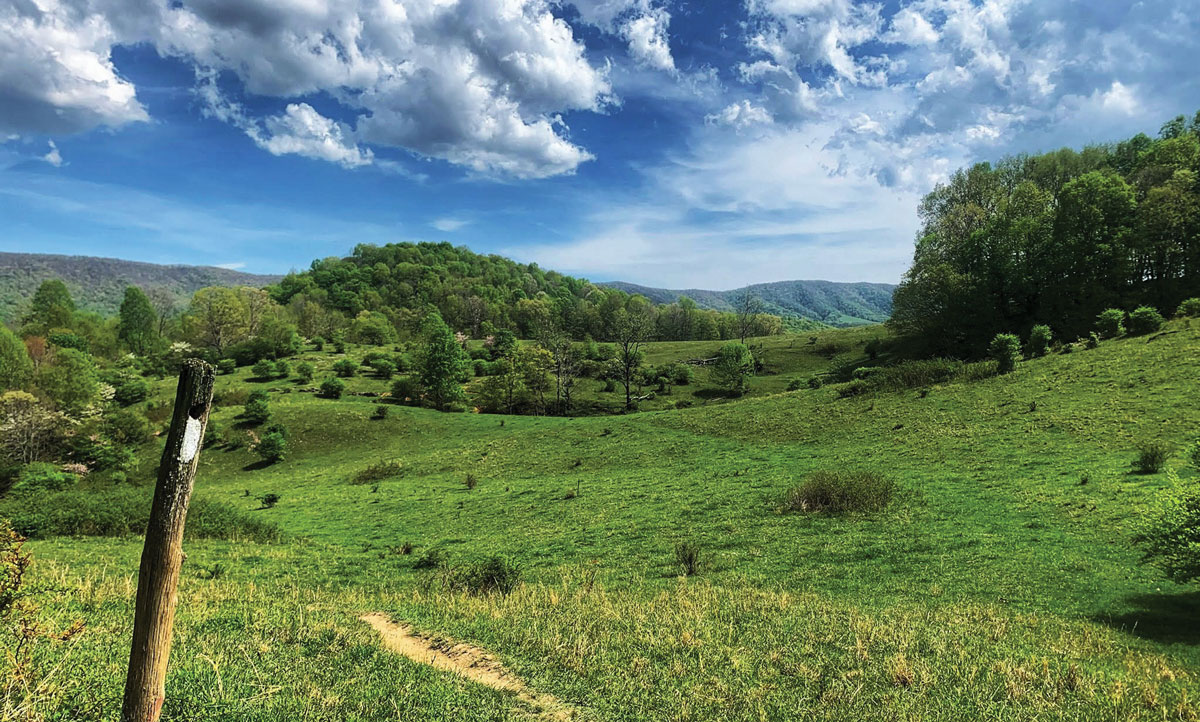
Almost one century after its publication, Benton MacKaye’s An Appalachian Trail: A Project in Regional Planning continues to be both relevant and prophetic. Take, for example, one of the reasons MacKaye identified the Trail as essential to mental health: “But living has been considerably complicated of late in various ways — by questions of personal liberty, and by ‘menaces’ of one kind or another. There have been created bitter antagonisms.” In an election year like 2020, few quotes from MacKaye’s article ring truer today. More to the point: never has an apolitical space like the Appalachian Trail been more necessary to escape the factionalism which, as of April 2020, will only become deeper as we head toward Election Day in November.









